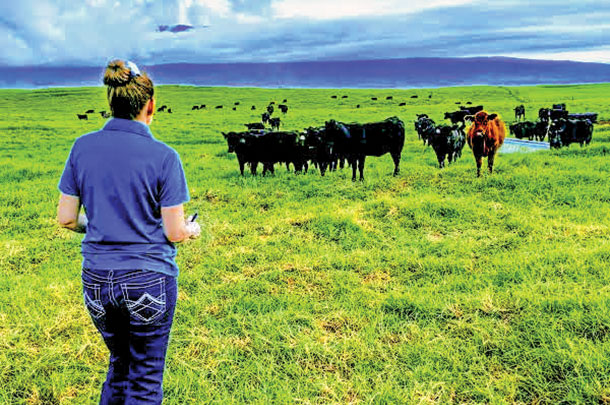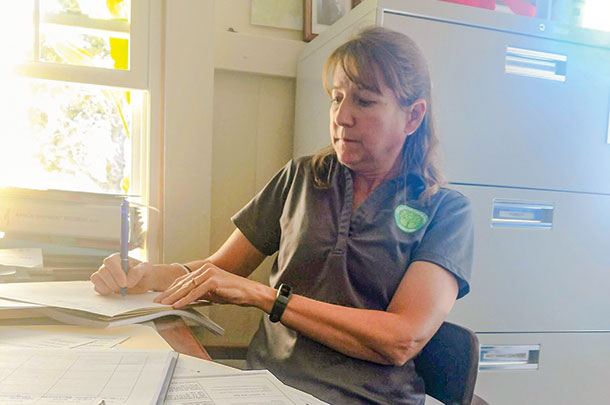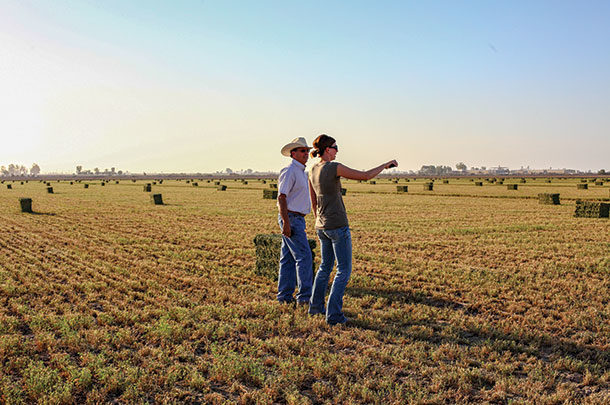While this has opened excellent avenues for beef producers of all sizes to sell their products, it also makes the market environment that much more competitive. With such a wide array of choices lining the meat section at the grocery store, it begs the question: How does your particular product stand out? Are you reaching the best possible demographics and meeting consumer demands?
In response to these challenges, third-party verification programs and audits are increasingly valued and utilized in the beef industry. These programs allow participating animals to be eligible for buyers and brands seeking specialty marketing requirements. This can increase the value and marketability of your cattle.

They also establish premiums for their supply chain, including producers. Some of these programs you may already be familiar with, such as verified natural beef (VNB), non-hormone-treated cattle (NHTC), verified grass-fed and the Global Animal Partnership (GAP) 5-Step Animal Welfare Rating. Operations enrolled in such programs follow different management requirements and are audited annually for compliance.
IMI Global, a division of Where Food Comes From, is one such company who audits and facilitates programs between producers and branded programs.
“IMI maintains a USDA Process Verified Program (PVP),” explains Doug Stanton, vice president of sales and business development. “We have USDA oversight on the marketing claims under our PVP umbrella. We evaluate operations to the requirements of these programs by conducting audits of documents, records and on-site evaluations. [The] USDA would then have oversight of verification services provided under our PVP umbrella.”
Dale Moore, owner of Cattleman’s Choice Feedyard and a cow-calf producer, utilizes multiple programs through IMI including GAP, VNB and NHTC, among others.
“Our younger generations are demanding verification, and that will likely continue to grow,” he says.
“Third-party verification also works as a safety net to the packers, wholesalers and consumers, which somewhat protects the producer and the feedyard if any issues arise. We have a verification market for every animal, every time. It involves strict management, a lot of sorting and strategic marketing, but every animal receives a verification premium.”
Growing opportunities
Stanton estimates somewhere from 10 to 15 percent of all U.S. beef animal annual fed-to-harvested numbers are under some type of program. These include both third-party verifications and those validated with an affidavit or self-evaluation.

“The percentage of cattle enrolled in third-party verification programs has increased over the past five years,” says Stanton. “We believe this will continue, as consumers have genuine interest in where their food comes from. That being where it was sourced, how animals were treated, how they were fed, what they were fed and even how the workers who care for the animals are treated.”
Besides different consumer preferences, third-party verification programs also open doors to certain international export markets. Some countries require very specific verification programs for traceability, consumer preference and health reasons.
Stanton notes, “Without access to our export markets, the value of a carcass would be over $300 less than it is currently.”
As a rancher, Moore believes verification can be likened to historical management changes producers have either forcibly or voluntarily made to keep up with the changing markets. For example, when feedyards and stockers demanded and paid more for properly preconditioned calves, producers rose to meet the need. In this case, it is consumers driving the demand for certain markets, and they are willing to pay higher prices. In both circumstances, producers are getting paid for their efforts.
“Our younger generations are demanding verification, and that will likely continue to grow,” says Moore. “I believe we are currently staying in pace with supply and demand. We will always have a huge need for commodity beef, so I can see the yards involved in verification programs growing with the demand and most commodity yards continuing to do what they do best.”
Making it work
Do you think participating in a third-party verification program is right for your operation? As with anything else, there is a cost and benefit. You will first want to understand the basic requirements and audit process of any program you are participating in.
For example, the requirements for the NHTC program include (not limited to) calves never receiving any kind of growth promotants, identified with a program-compliant tag (EID tag) and an annual on-site audit of your ranch. Proper records must also be provided at each audit.
“Without a doubt, there are a lot of challenges that come with these programs,” says Moore. “Timely placements, overall feeding practices, sorting for different markets and marketing those at the right time.”
Another challenge to working with third-party verification programs is keeping proper documentation and good records to prove them. Moore says he knows of many producers already doing 90 percent of verification practices, but they don’t always document everything properly. Inefficiency, lack of good management and aversion to change are also obstacles. Nevertheless, he believes these programs are still very doable for producers wishing to pursue them if they’re willing to put in the extra effort.
“I know 80-year-old ranchers who participate in the most intense programs offered, and they do it very well,” he says.
The cost over benefit of participating in any given program varies greatly by different markets, location and operation management of the producers involved.
“Our customers evaluate our verification programs based on the return/premium they feel they will get in the marketplace,” says Stanton. “The cost of our verification programs and the return on investment is constantly evaluated. By the growth of our programs and renewal in our programs, it is our best indication the financial benefits are outweighing the costs.”
Third-party verification programs are one such example where consumer satisfaction meets producer profitability in a high-quality end product.
“U.S. beef has always been the safest, tastiest and most trusted product available to consumers,” says Moore. “Verification programs are another safety net making sure that continues to be true, as well as helping to get the stories behind the product and programs to the consumer.” ![]()
PHOTO 1: Verification of beef production methods is popular demand among consumers today. In this photo, an auditor visits with a producer at Bijou Creek Livestock in Simla, Colorado.
PHOTO 2: An auditor looks at cattle in a verification program in Hawaii.
PHOTO 3: Third-party verification also requires good management of your documents and records about the herd. Photos courtesy of Cattleman’s Choice.
Jaclyn Krymowski is a freelancer based in Ohio.









